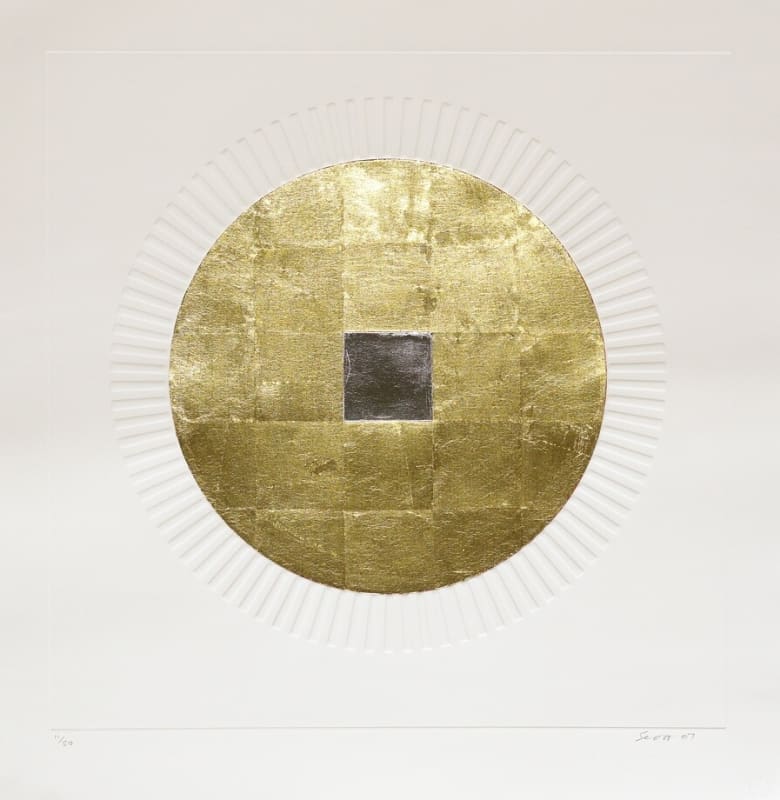Patrick Scott was born in Kilbrittain, Co. Cork in 1921. He studied Architecture at University College Dublin from 1939 and from 1945 to 1960 worked for the architectural practice of Michael Scott. While still in college, Scott became involved with the White Stag Group in Dublin and began exhibiting with them. This marked the start of a career spanning more than fifty years; he died in 2014 on the eve of a major retrospective of his work at IMMA.
Patrick Scott's work was strongly influenced by his early training and practice as an architect, and he frequently employed the angular lines and reductive forms of Modernist architecture to describe the natural world with an analytical precision. His paintings, drawings and prints are uncompromisingly abstract, distilling the environment into two dimensions with a medative austerity that was balanced by his frequent use of gold (and sometimes silver or palladium) leaf against subtle geometric tempera shapes and rough, raw canvas. He is probably best known for the iconic Goldpaintings which he produced from 1964 onwards.
Patrick Scott represented Ireland at the XXX Venice Biennale in 1960 and was winner of the National Award at the Guggenheim International Exhibition, New York in the same year. He was presented with the Irish American Cultural Institute O'Malley Art Award in 2004. Scott was a founder member of Aosdána and in 2007 was elected Saoi of Aosdána and presented with a gold Torc, symbol of the office of Saoi, by President Mary McAleese.
Scott was also an Honorary member of the RHA. The Douglas Hyde Gallery, Dublin, held a major retrospective of his work in 1981 and Dublin City Gallery The Hugh Lane followed suit in 2002. In addition to the Dawson Gallery and Taylor Galleries, he also exhibited regularly at the B.P Gallery, Brussels; Annely Juda Fine Art, London; and the Stirling Gallery, Scotland. Scott completed numerous tapestry commissions for the Bank of Ireland, Trinity College Dublin and the Department of Agriculture, amongst others.
His work is held in numerous private collections in Ireland and abroad, and in the public collections of the Museum of Modern Art, New York; Irish Museum of Modern Art, Dublin; Gulf Oil Corporation, Pittsburg; and the Ulster Museum in Belfast.

